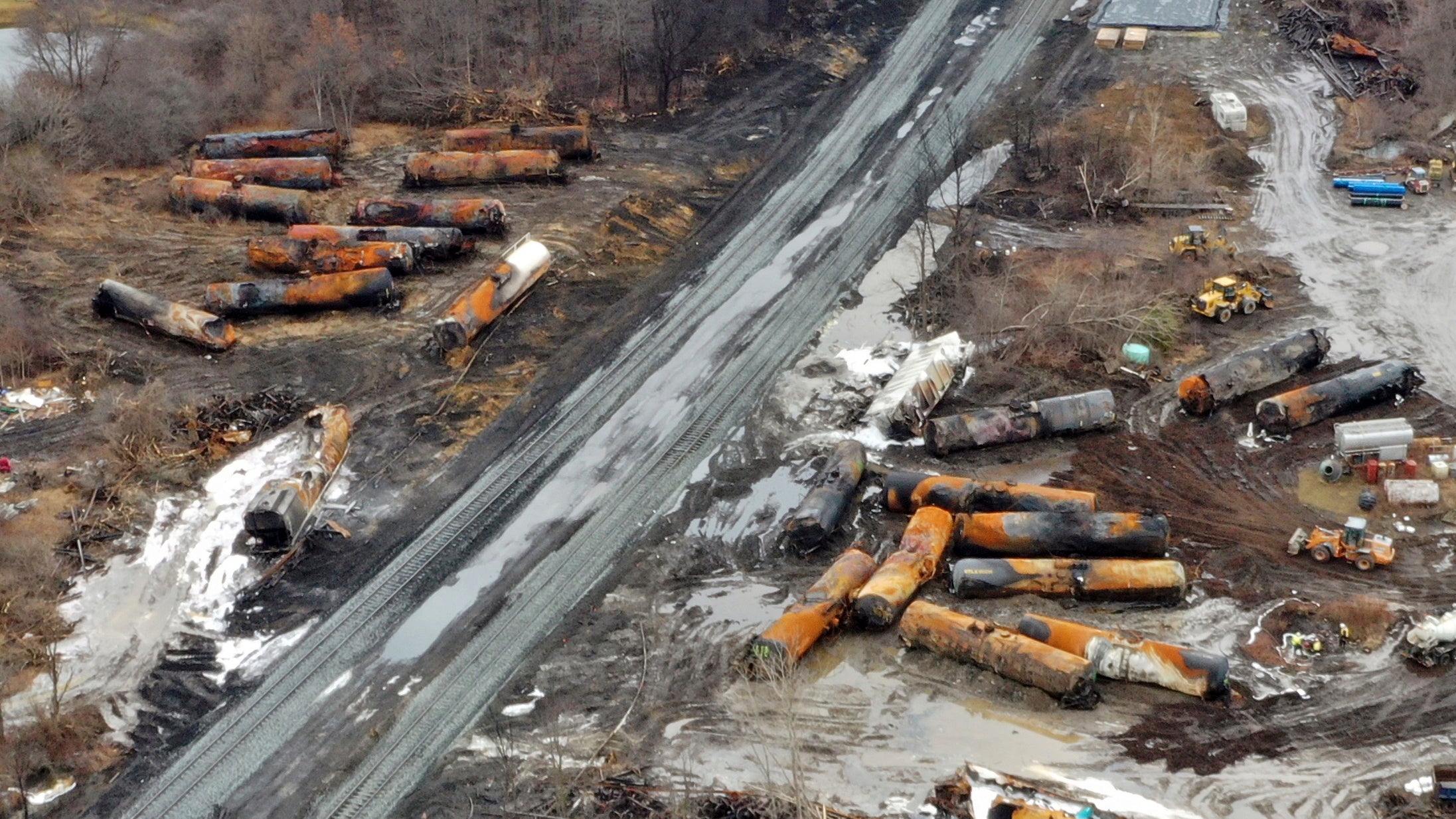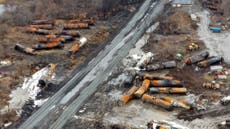Ohio train derailment: What chemicals were spilled and how toxic are they?
No one was killed in the incident but more than 2,000 residents were temporarily evacuated
Your support helps us to tell the story
From reproductive rights to climate change to Big Tech, The Independent is on the ground when the story is developing. Whether it's investigating the financials of Elon Musk's pro-Trump PAC or producing our latest documentary, 'The A Word', which shines a light on the American women fighting for reproductive rights, we know how important it is to parse out the facts from the messaging.
At such a critical moment in US history, we need reporters on the ground. Your donation allows us to keep sending journalists to speak to both sides of the story.
The Independent is trusted by Americans across the entire political spectrum. And unlike many other quality news outlets, we choose not to lock Americans out of our reporting and analysis with paywalls. We believe quality journalism should be available to everyone, paid for by those who can afford it.
Your support makes all the difference.Residents of the small town of East Palestine, Ohio are still dealing with the environmental consequences of a major train derailment this month.
Some 38 cars derailed from a Norfolk Southern freight train on 3 February. Around 10 of those cars were carrying hazardous materials when it careened off the tracks after suffering a broken axle, investigators said.
No one was killed in the incident but more than 2,000 residents were temporarily evacuated from the area due to health concerns.
Some of the rail tankers contained vinyl chloride, which was at risk of a chemical explosion. Crews carried out a controlled burn of the substance to prevent a blast but still sent noxious black clouds billowing across the region.
The fire released phosgene, a gas deployed as a chemical weapon in the First World War, which causes eye irritation, dry burning throat and vomiting.
Vinyl chloride, which is used to make plastic pipes, wires and packaging, is linked to increased risk of a rare form of liver cancer, hepatic angiosarcoma, along with primary liver cancer, brain and lung cancers, lymphoma and leukaemia, according to Cancer.gov.
Hydrogen chloride is released by burning vinyl chloride and also an irritant to the skin, nose, eyes and throat, according to the Centers for Disease Control and Prevention (CDC).
The Environmental Protection Agency subsequently published a full inventory of the toxic chemicals on board the train, which included butyl acrylate, ethylhexyl acrylate and ethylene glycol monobutyl ether.
The substances are used to manufacture of resins, adhesives, sealants, coatings and paints, and exposure can irritate the skin and eyes, and cause headaches, nausea and vomiting.
Environmental remediation work is ongoing, Norfolk Southern said, along with air, soil and water monitoring in coordination with state and federal agencies.
The derailment has raised questions about the frequent use of rail transportation in the US to move vast quantities of toxic and dangerous substances through communities.

Ian Jefferies, head of the Association of American Railroads trade group, said 99.9 per cent of all hazardous materials shipments reach their destinations safely.
Federal Railroad Administration data showed that hazardous chemicals were released in 11 train accidents across the US in 2022, out of roughly 535 million miles covered. Only two injuries were reported, according to the agency. In the past decade, releases of hazardous materials peaked at 20 in both 2018 and 2020.
“Railroads are the safest form of moving goods across land in the country without question,” Mr Jefferies said. “But railroads are also working to drive toward zero incidents. Until we reach that goal, we haven’t got to where we want to be.”
Hazardous materials account for around 7-8 per cent of the 30 million shipments that railroads deliver across the country every year.
But rail operators mix freight so on almost any train at least a couple of cars of toxic materials can be found.
Additional reporting by agencies




Join our commenting forum
Join thought-provoking conversations, follow other Independent readers and see their replies
Comments